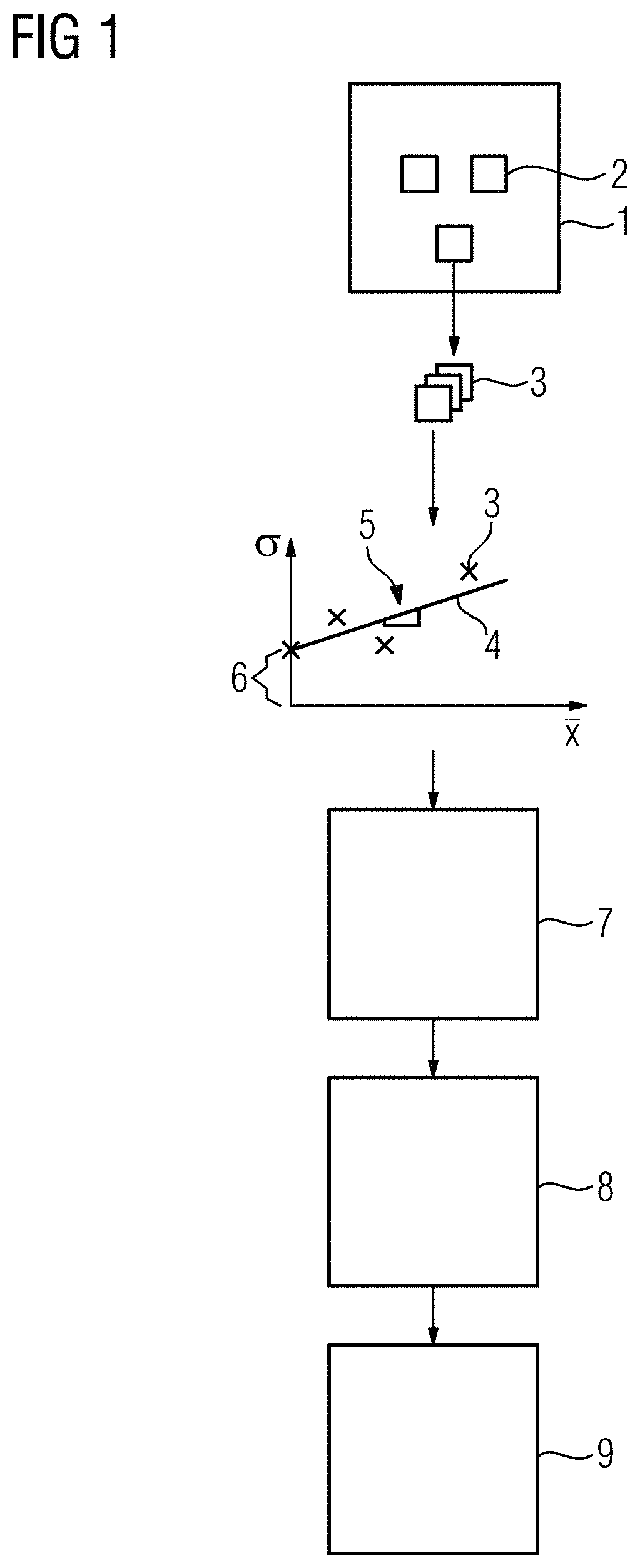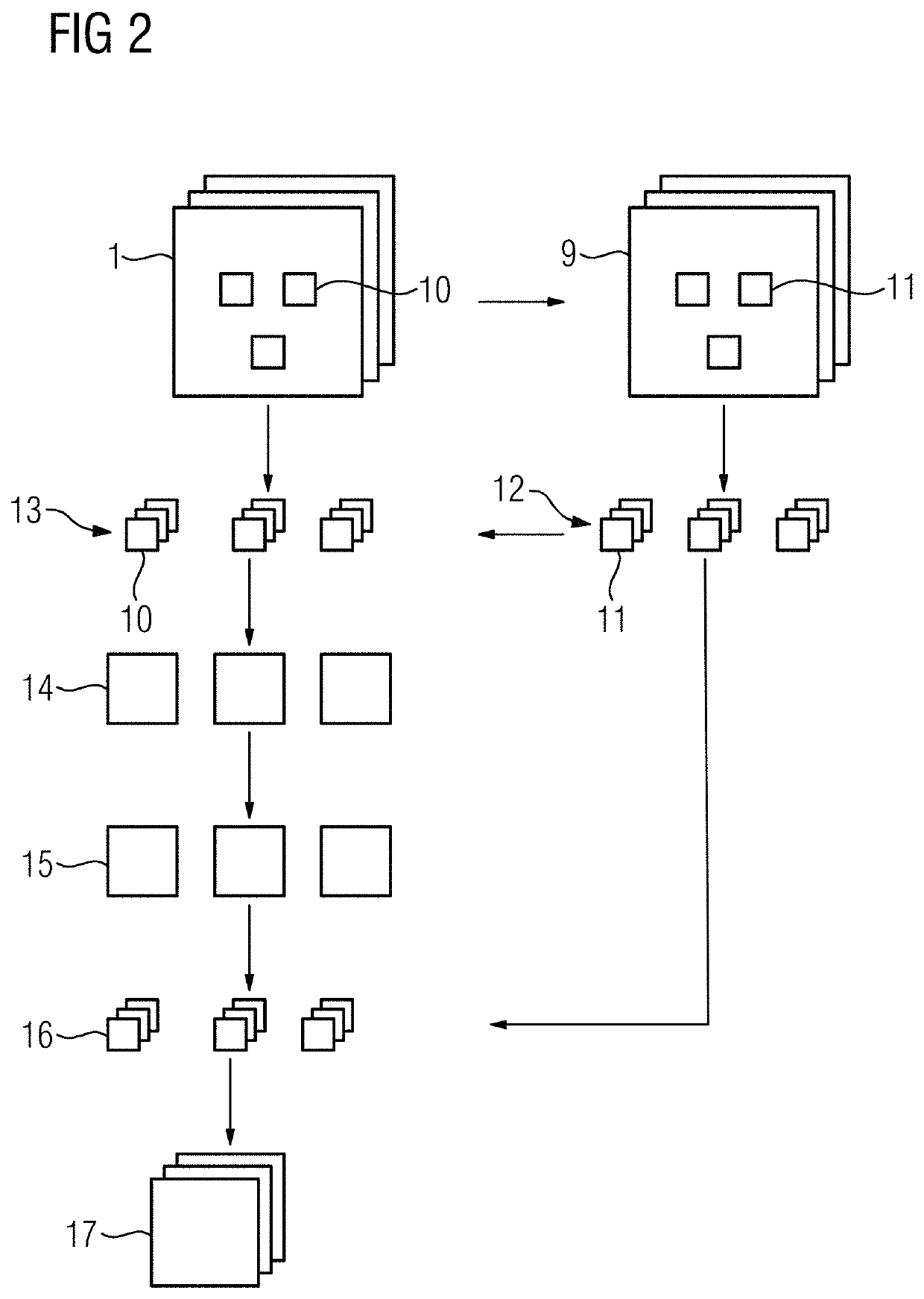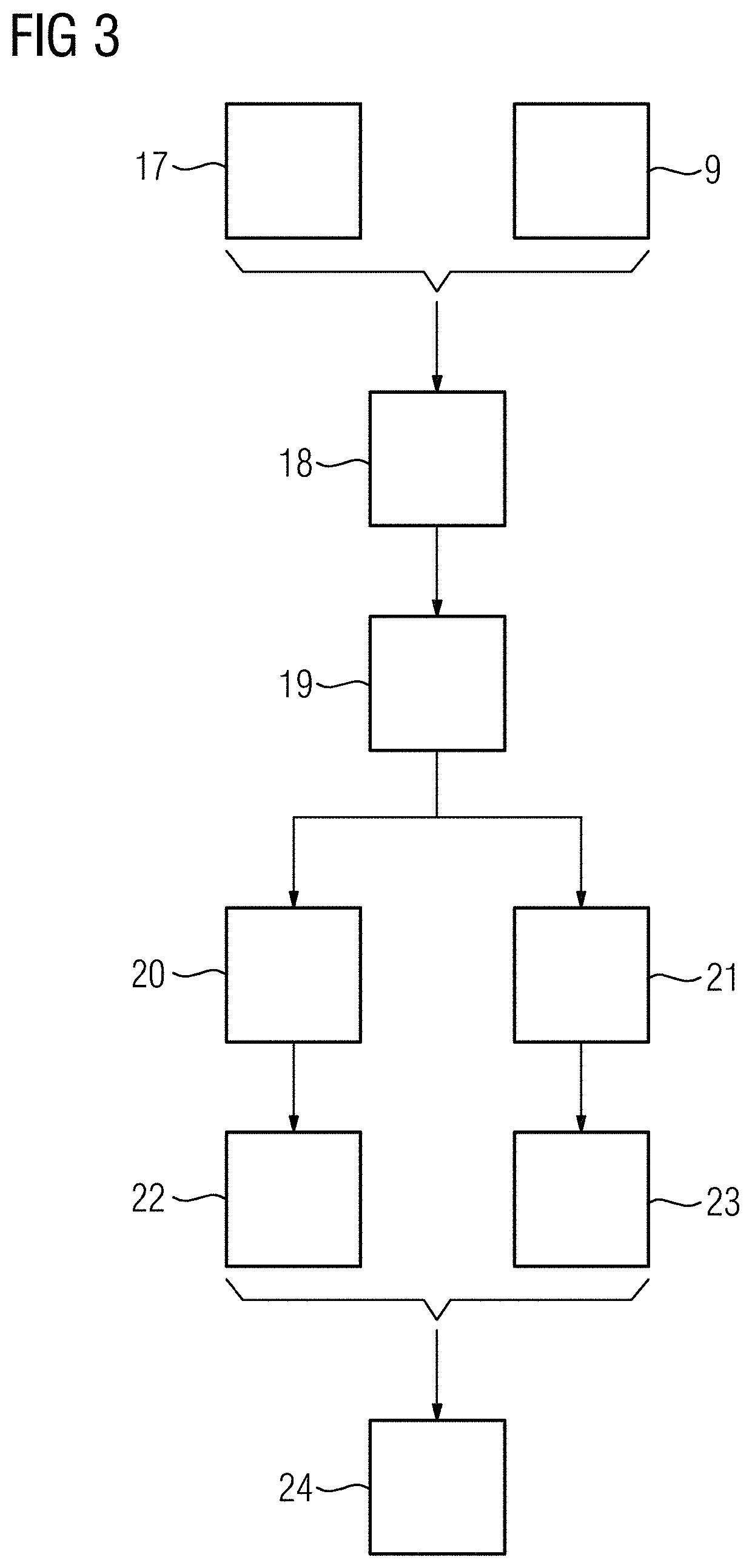Processing at least one X-ray image
a technology of x-ray and image, applied in image data processing, instruments, computing, etc., can solve the problems of increasing noise level in images, accidentally removing structures within images, and lowering the dosage, so as to reduce noise and save structure
- Summary
- Abstract
- Description
- Claims
- Application Information
AI Technical Summary
Benefits of technology
Problems solved by technology
Method used
Image
Examples
Embodiment Construction
lass="d_n">[0097]FIG. 1 schematically shows the acts used to denoise an X-ray image 1, where a variance of a noise in the X-ray image 1 is signal dependent. The noise is especially dependent on a property of the X-ray imaging device used to acquire the image (e.g., electrical noise at the detector for the selected image acquisition protocol (exam set)) and on measurement parameters used to record the X-ray image. The discussed approach to denoising may be used when imaging parameters are dynamically selected during the X-ray acquisition.
[0098]As discussed below, the post processing parameters are directly determined from the image data, which provides that the denoising may even be applied when parameters (e.g., the gain of the detector, the frame rate, or an X-ray dose) change during the image acquisition. The image may, for example, be acquired during a coronary angiography, where the frame rate and / or the dose may be reduced when the heart is approximately at rest and increased d...
PUM
 Login to View More
Login to View More Abstract
Description
Claims
Application Information
 Login to View More
Login to View More - R&D
- Intellectual Property
- Life Sciences
- Materials
- Tech Scout
- Unparalleled Data Quality
- Higher Quality Content
- 60% Fewer Hallucinations
Browse by: Latest US Patents, China's latest patents, Technical Efficacy Thesaurus, Application Domain, Technology Topic, Popular Technical Reports.
© 2025 PatSnap. All rights reserved.Legal|Privacy policy|Modern Slavery Act Transparency Statement|Sitemap|About US| Contact US: help@patsnap.com



